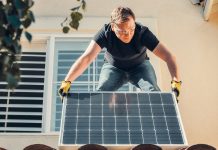As drone technology advances, its uses in environmental monitoring are becoming more widespread.
Solar-powered drones are more efficient and can stay in the air longer than their fossil fuel-powered counterparts.
They can identify problems with power plant boilers, help with forestry management, and even identify species of marine life. These are just some of the many applications that are making our planet better.

Enhanced Efficiency
Powered by sunlight, solar powered drones & aircraft don’t require fuel. This can cut down on operating expenses and environmental impact. They can also fly for long periods without a recharge, as they are not dependent on weather conditions.
This allows for more efficient coverage of large areas than traditional aircraft or drones. Drones equipped with sensors and cameras can collect high-resolution images and data.
This is an effective way of tracking a project’s progress or evaluating the environment’s status. Using drones to conduct these inspections saves both money and lives by eliminating the need for people to risk their safety for manual assessment.
Fewer Emissions
Solar-powered drones do not need fossil fuels to run, unlike conventional drones. This reduces both air and noise pollution. The energy generated by the solar panels is stored in a battery and then used to power the drone’s motors and systems.
The result is a drone that can fly longer and farther without returning to land for refueling or maintenance. These long-endurance drones can provide valuable information, including weather updates, ocean monitoring, and disaster relief.
In addition, this technology can also be used to monitor ocean conditions for oil spills and tsunami warnings. This is a vital tool to help protect the environment. The best part is that the drones are affordable and require little operational preparation or infrastructure.
Safer Way to Collect Data
With a high-resolution camera or a thermal imaging sensor, drones can help identify issues that are difficult to notice with the naked eye.
This includes micro-cracks, shading, temperature anomalies on the panels, and the overall condition of a solar farm or installation.
Drones can collect vast data more quickly and easily compared to traditional environmental monitoring methods.
This can save on valuable man-hours and the costs associated with equipment and potential shutdowns.
In the case of glacial melt, drones equipped with a high-resolution camera can capture surface images and measure the melting rate in just two half-day sessions, compared to a full day for traditional ground-based measurements.
Increased Conservation
Solar-powered drones allow ecologists to monitor wildlife in their natural habitat without disrupting their activities.
Similarly, disaster relief professionals can use drones to assess ecological damage in unsafe areas and help individuals retreat to safer regions.
Solar drones with advanced artificial intelligence (AI) algorithms can modify their flight paths in response to shifting environmental conditions.
They can also automatically reroute to avoid obstacles and continue their mission, saving time and resources on manual refueling.
Related Posts:









